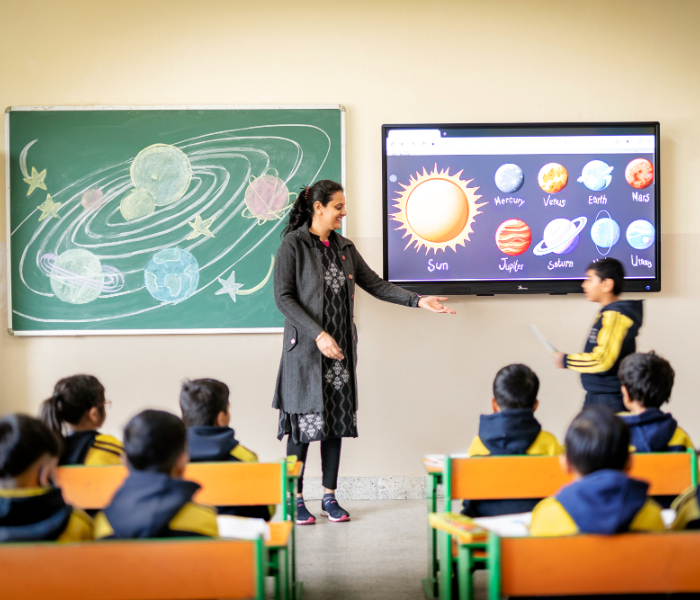Welcome to Abhinava Bharathi Shikshana trust
Digital Classes
Digital classes have revolutionized the way education is delivered, transforming traditional classrooms into dynamic, interactive learning environments. Here’s an exploration of what digital classes in schools entail:
1. Introduction to Digital Classes
- What Are Digital Classes?: Digital classes, also known as online or virtual classes, integrate technology into the learning process, using tools like computers, tablets, and smartboards to deliver lessons. They can take place in a physical classroom or entirely online.
- Evolution of Education: The rise of digital classes marks a significant shift from traditional teaching methods, making education more accessible, flexible, and personalized.
2. Key Features of Digital Classes
- Interactive Learning Tools: Digital classes utilize interactive whiteboards, educational software, and online platforms that allow students to engage with content in real-time. Tools like quizzes, polls, and discussion forums foster active participation.
- Multimedia Content: Lessons are enhanced with videos, animations, simulations, and virtual labs, making complex concepts easier to understand and retain.
- Access to Global Resources: Students can access a wealth of information from around the world, including online libraries, educational websites, and video lectures from experts in various fields.
3. Benefits of Digital Classes
- Personalized Learning: Digital platforms allow for personalized learning experiences, where students can learn at their own pace. Adaptive learning technologies adjust the difficulty of tasks based on individual performance.
- Enhanced Engagement: Interactive and multimedia content tends to keep students more engaged and motivated. Gamified learning experiences make education fun and immersive.
- Convenience and Flexibility: Digital classes offer the flexibility to learn anytime and anywhere. This is particularly beneficial for students who may have other commitments or those in remote areas.
- Real-Time Feedback: Teachers can provide instant feedback on assignments and assessments, helping students understand their mistakes and improve quickly.
4. Challenges and Solutions
- Digital Divide: Not all students have equal access to the necessary technology or the internet. Schools can address this by providing devices, offering offline resources, or creating community learning hubs.
- Teacher Training: Educators need to be proficient in using digital tools and platforms. Regular training and professional development programs are essential to equip teachers with the necessary skills.
- Screen Time Concerns: Prolonged exposure to screens can lead to health issues like eye strain. Schools can mitigate this by balancing screen-based activities with hands-on projects and encouraging regular breaks.
5. The Role of Teachers in Digital Classes
- Facilitators of Learning: In digital classes, teachers transition from traditional lecturers to facilitators who guide students through interactive and self-directed learning experiences.
- Monitoring Progress: Teachers can use digital platforms to track student progress, identify areas of improvement, and provide additional support where needed.
- Creating Collaborative Opportunities: Teachers can foster collaboration through group projects, peer reviews, and online discussion boards, encouraging students to learn from each other.
6. Future of Digital Classes
- Integration of AI and Machine Learning: Artificial intelligence can further personalize learning by analyzing student data and predicting learning patterns, providing customized educational experiences.
- Virtual and Augmented Reality: The use of VR and AR in digital classes can create immersive learning environments, allowing students to explore historical events, conduct virtual science experiments, or tour famous landmarks.
- Global Classrooms: Digital platforms enable cross-border collaboration, where students from different countries can work on projects together, broadening their perspectives and understanding of global issues.
7. Parental Involvement in Digital Classes
- Active Participation: Parents can play a more active role in their child’s education by monitoring their progress through digital platforms and communicating regularly with teachers.
- Support at Home: Providing a conducive learning environment at home, such as a quiet space and necessary technology, is crucial for the success of digital classes.




